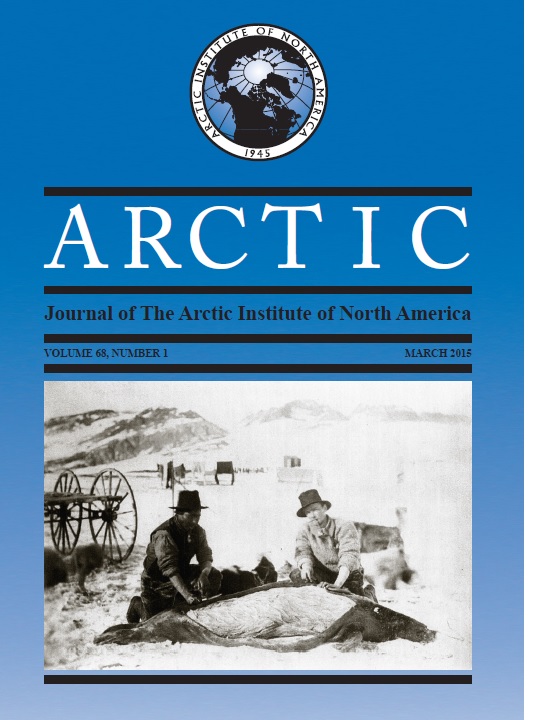Wolf (<i>Canis lupus</i>) Winter Density and Territory Size in a Low Biomass Moose (<i>Alces alces</i>) System
DOI:
https://doi.org/10.14430/arctic4458Ключевые слова:
Alaska, biomass, density, GPS, moose (Alces alces), territory, wolf (Canis lupus)Аннотация
We investigated the winter density and territory size of wolves (Canis lupus) on the Yukon Flats, Alaska, where moose (Alces alces) was the sole ungulate prey, occurring at a low density and representing a biomass of ungulate food lower than previously studied in North America. Using locations (GPS coordinates) from collars deployed on seven wolves, we estimated territory sizes with adaptive kernel and minimum convex polygon methods. We then estimated wolf density from a population area defined by these territory sizes and counts of wolves in five marked packs. From November 2009 to April 2010, we obtained 6263 GPS locations. Pack size ranged from two to 10 wolves, with average size of 5.0 in November 2009 and 4.8 in March 2010. Average winter territory size for five packs was 1433 km2 with the 95% adaptive kernel method and 1608 km2 with the minimum convex polygon method. Density (wolves/1000 km2) was 3.6 in November and 3.4 in March with the 95% adaptive kernel method and 3.4 in both November and March with the minimum convex polygon method. Territories were large and estimates produced by the two methods differed by 11%. Densities were low, and the two analysis methods yielded densities that differed from each other by 3% to 6%. Low wolf density corresponded with low biomass of ungulate food, suggesting that moose availability on the Yukon Flats likely limited wolf density.Загрузки
Опубликован
2015-02-23
Выпуск
Раздел
Articles


